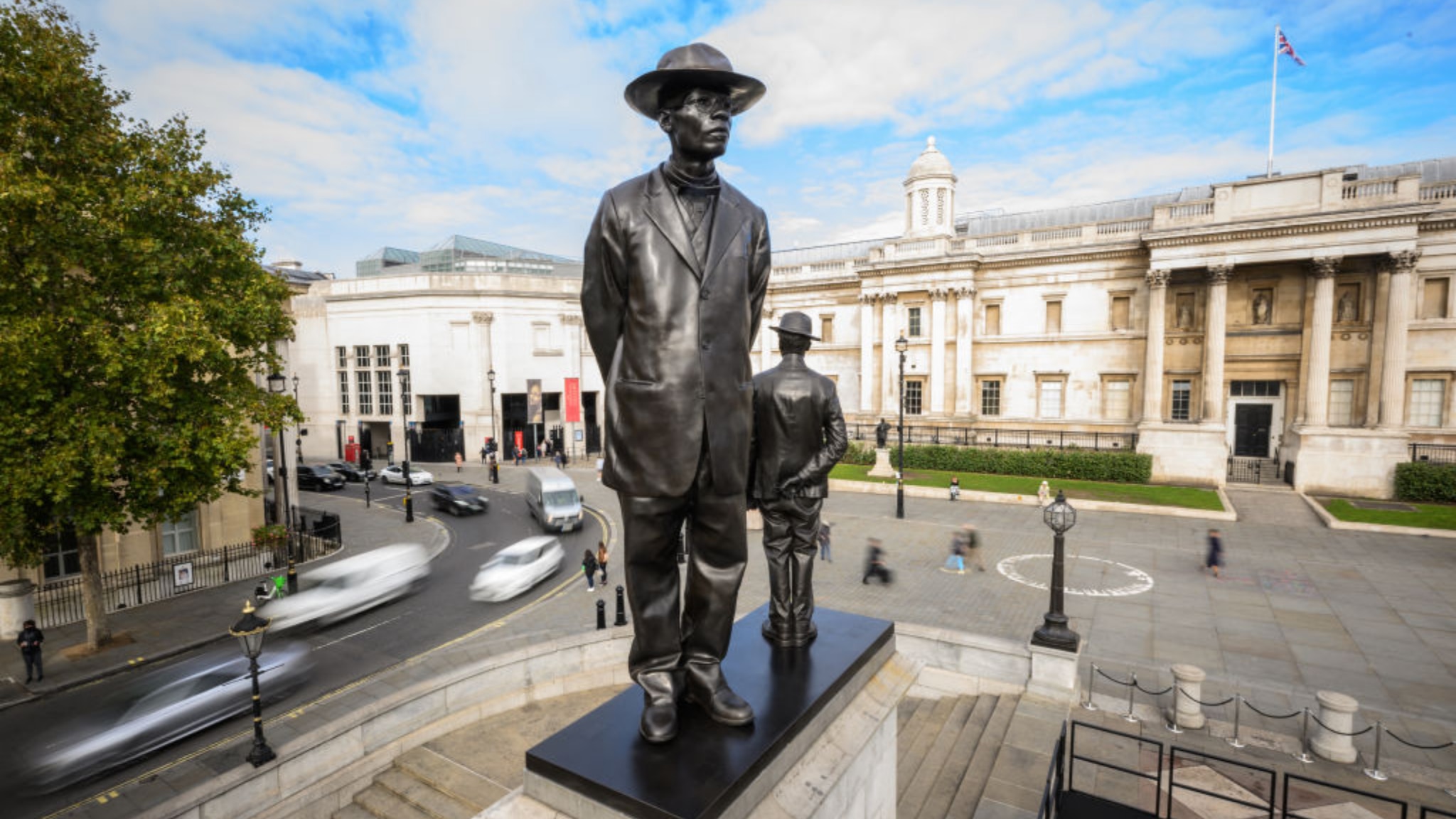A sculpture depicting Baptist pastor John Chilembwe, killed in the failed 1915 uprising against British colonial rule in Malawi, has been unveiled in Trafalgar Square, in the monumental heart of London.
Entitled "Antelope", it was created by the Malawian artist Samson Kambalu and is destined to remain on the pedestal known as the "fourth plinth" until 2024. In the work we see Chilembwe wearing a hat, a gesture of defiance in the confrontations with colonial power that forbade Africans to wear a hat in front of whites.
It is five meters high, almost double that of the neighboring European missionary John Chorley: a choice by Kambalu to highlight the pastor's story, inspired by a 1914 photo in which the two religious were portrayed together.
Sculpture,
The statue is part of the project in which we want to talk, through art, of anti-colonialism and LGBT rights in the central square of London.
In fact, as is well known, around Nelson's column there are four plinths, which date back to the project of the square conceived by the architect Charles Barry (London, 1795-1860), to whom we owe the current appearance of Trafalgar Square.
Three of the plinths have been occupied by statues since the nineteenth century, while the fourth (now known as the Fourth Plinth) has been hosting works of art every two years since 1998, chosen by the Royal Society of Arts.
Last year the winners of the "Fourth Plinth" for 2022 and 2024 were announced, which will succeed the sculpture The End by Heather Phillipson (London, 1978): a large tuft of whipped cream with a cherry, a fly and a drone (sculpture that speaks of exuberance and discomfort and wants to represent Trafalgar Square as a place of celebration but also of protests).
Phillipson's work has remained until now and now Antelope stands in its place, while in 2024 it will be the turn of 850 Improntas by Mexican Teresa Margolles (Culiacán, 1963), a sculpture made up of casts of the faces of 850 transgender people.
Kambalu and Margolles were chosen from a shortlist of six international artists from America, Germany, Ghana, Mexico and the United Kingdom.
The winning works were chosen by the Fourth Plinth Commissioning Group, chaired by writer, journalist, television host and curator Ekow Eshun.

